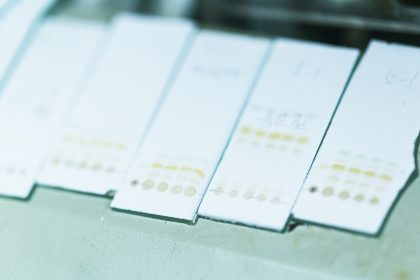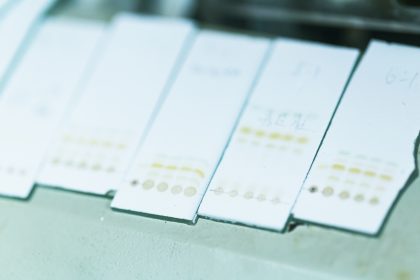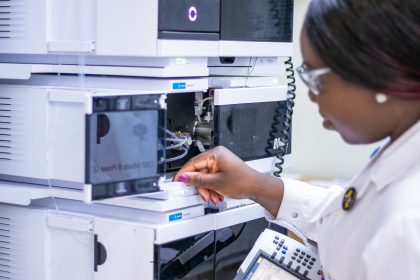Trusted Expertise in Amino Acid Testing
At Butterworth Laboratories, we have a long history of supporting the pharmaceutical industry with reliable Ninhydrin-Positive Substances Testing (NPSs). We were among the first laboratories to implement the Ph. Eur. general monograph 2.2.56, Method 1, moving beyond the traditional TLC approaches originally used within individual amino acid monographs. This method also includes the important limit test for ammonium, ensuring compliance with regulatory requirements.
We upgraded from a conventional HPLC system with post-column derivatisation to a dedicated Hitachi LA8080 Amino Acid Analyser to improve accuracy and efficiency. This investment has strengthened our ability to deliver high-quality, pharmacopoeial-compliant results for our clients.
Our team has verified testing capability for a broad portfolio of amino acids, including base, anhydrous, and optical isomer forms:
- Alanine
- Arginine*
- Arginine hydrochloride
- Aspartic Acid
- Cystine
- Cysteine hydrochloride monohydrate
- Glycine
- Histidine*
- Histidine hydrochloride monohydrate
- Isoleucine
- Leucine
- Lysine hydrochloride
- Phenylalanine
- Proline
- Serine
- Threonine
- Tryptophan
- Tyrosine
- Valine
*Note that verification has been performed on the salt/hydrated forms, but is inferred on the base/anhydrous forms due to dissociation in solution
We have also demonstrated the application of this method to Related Substances testing as described in the Japanese Pharmacopoeia (JP), successfully qualifying Alanine and extending comparable tests to amino acids such as Glutamic acid.
Whether you require routine pharmacopoeial compliance or are exploring the testing of amino acids not listed above, our experts are here to help. Contact us today to discuss your requirements and benefit from Butterworth Laboratories’ trusted expertise in amino acid and ninhydrin-positive testing.
Frequently Asked Questions
The Ph. Eur. general method 2.2.56 specifies Ninhydrin-Positive Substances Testing (NPSs) to confirm the identity and purity of amino acids and related compounds. The method detects compounds that form a chromophore upon reaction with ninhydrin, providing both specificity and sensitivity. It also includes the limit test for ammonium, a critical impurity parameter. Compliance with this method is mandatory for amino acids covered by relevant monographs.
Challenges may include interference from non-target compounds that also react with ninhydrin, accurate quantification of amino acids with poor chromatographic separation, and ensuring system suitability compliance. Proper calibration, use of dedicated amino acid analysers, and strict adherence to pharmacopoeial conditions are essential to maintain accuracy and reproducibility.
Earlier amino acid monographs described thin-layer chromatography (TLC) for identification and purity checks. NPSs testing (Ph. Eur. 2.2.56) replaced these methods, offering greater specificity, sensitivity, and quantitative accuracy. While TLC provided qualitative results, the modern method supports quantitative analysis and impurity profiling, making it more robust for regulatory compliance.



